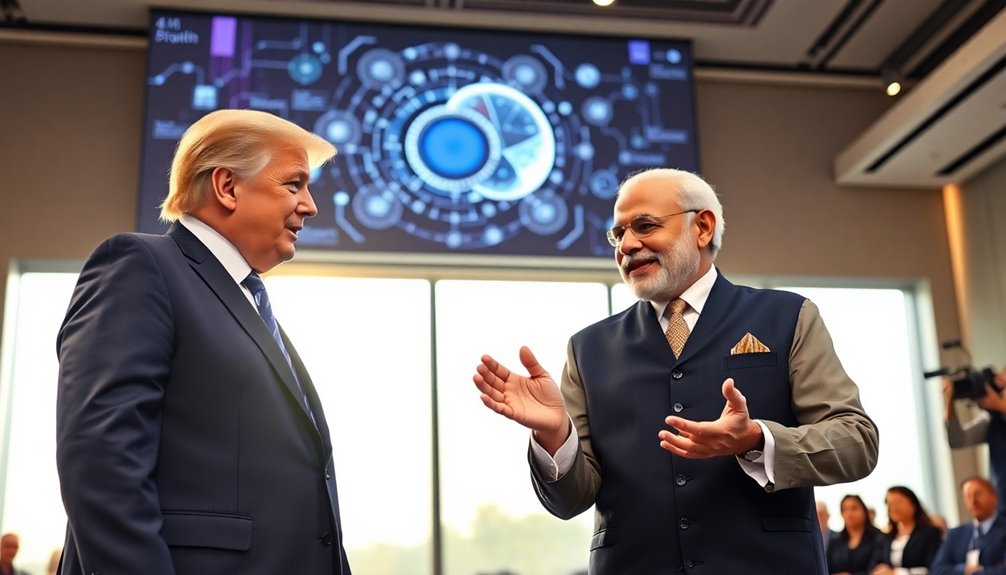You might have noticed how global leaders are increasingly prioritizing artificial intelligence. Following in the footsteps of Emmanuel Macron, Donald Trump has now teamed up with Narendra Modi to push forward AI initiatives through the US-India TRUST Initiative. This partnership not only emphasizes ethical AI development but also aims to strengthen ties between the nations. But what implications could this collaboration have for global AI governance and economic growth?

In a groundbreaking move, former President Donald Trump and Indian Prime Minister Narendra Modi are teaming up to spearhead a new initiative focused on artificial intelligence (AI) and related technologies. This initiative, named the US-India TRUST initiative, aims to strengthen collaboration among governments, academia, and the private sector, emphasizing ethical AI development and innovation.
One of the key areas of focus is the establishment of an AI infrastructure roadmap designed to accelerate the development of AI capabilities. By working together, the U.S. and India plan to enhance semiconductor production, crucial for powering AI systems, and foster advancements in quantum computing. In addition, the initiative is expected to align with the future provision of F-35 stealth fighters to India, highlighting the importance of defense cooperation in the broader context of technological advancements.
This partnership also extends to biotechnology research, where both nations hope to unlock new potentials for healthcare and agriculture. The initiative's impact will be felt in energy and space technologies as well, with joint efforts expected to yield significant advancements.
You might find it interesting that this collaboration isn't just about technology; it's also about economic benefits. By pursuing bilateral trade expansion through technological cooperation, both countries plan to create strong supply chains for critical minerals and materials. This could lead to substantial job creation in manufacturing sectors, offering new opportunities for workers in both nations.
Moreover, diversifying vital supply chains will help reduce risks associated with drug shortages, enhancing national security and public health.
In the global context, India's recent signing of the Paris AI Action Summit declaration highlights its commitment to inclusive AI, while the U.S. has expressed concerns about over-regulation. This difference in regulatory perspectives could lead to interesting discussions as both nations work toward collective global efforts for AI governance.
You may appreciate that there's a shared acknowledgment of the need to ensure access to AI for all, particularly for developing nations in the Global South.
As the TRUST initiative unfolds, future summits are planned to discuss governance and innovation, ensuring that ethical considerations remain at the forefront. The collaboration between Trump and Modi could set the stage for a new era of technological partnership, impacting not just their countries but the global landscape of AI.
This initiative represents a significant step forward, uniting two major economies to tackle the challenges and opportunities of AI together. You'll want to keep an eye on how this partnership evolves and the benefits it may bring in the years ahead.









